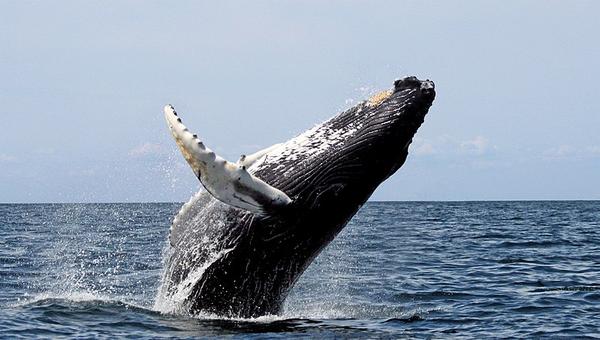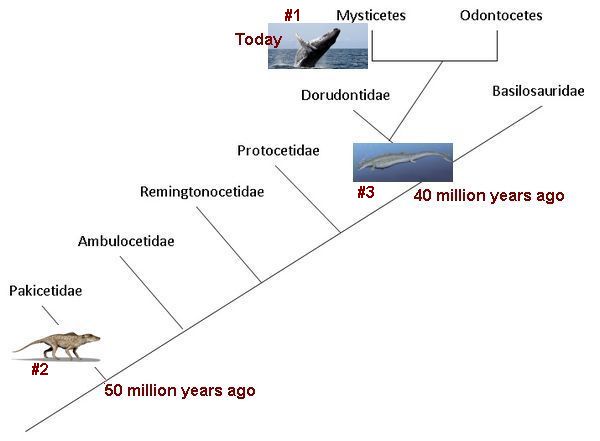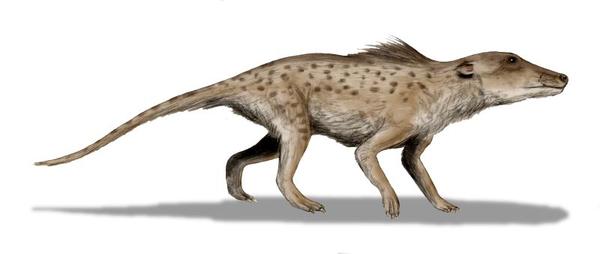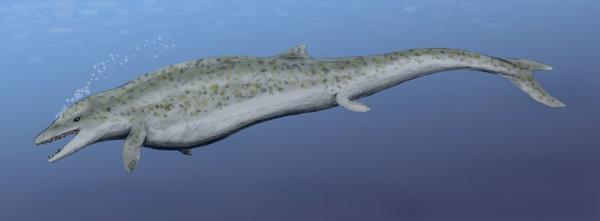
Here’s a surprising thing: The ancestors of whales were land-based walking animals that fell in love with water. In the ensuing 50 million years successive species spent more and more time at sea, eventually lost their legs, and now resemble fish. (No, they aren’t fish. They just resemble them.)
How did they change from land to sea? To solve the mystery, paleontologists closely examined the fossil record looking for the one trait that only whales have: the unique bony structure of the whale’s inner ear. A fossil found in 1981 provided the missing link.
Shown below are two of the whale’s ancestral relatives. Not direct ancestors, the diagram shows where those two fit on the family tree. Whales are labelled #1. Animal #2 looks like a dog. #3 looks like a whale.

The change from species to species was incredibly slow.
If we could go back in time 50 million years to the Early Eocene we’d meet Pakicetus inachus (#2), below. First discovered in Pakistan in 1981, he looks like a long-headed dog but he has the whale’s special inner ear. Scientists hypothesize that he lived on land but spent time up to his eyes in water hiding from predators.

Fast forward 10 million years to the Late Eocene to see Dorudon atrax (#3), an ancestral whale that spent his entire life in water. His body was fish-shaped, his tail had flukes, and since he never walked his hind legs were small, almost an afterthought.

From “the fish walked” to the walker that became fish-like, whales turn our misconceptions about evolution on their head. Evolution doesn’t “make progress” from simple water-based organisms to us land-based humans at the pinnacle of development. It’s just any change over time.
For more information about whales, see their family tree at U.C. Berkeley’s The evolution of whales and an article in Smithsonian Magazine: How Did Whales Evolve?
(all images from Wikimedia Commons; click on the images to see the originals)